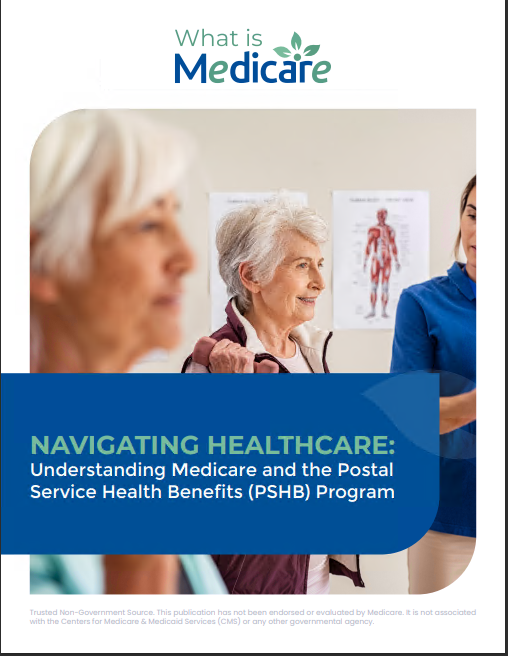Key Takeaways
- Medicare Part A and Part B combine to create comprehensive health coverage, covering both hospital and outpatient services.
- Understanding how these two parts work together can help you make the most of your benefits and avoid unexpected costs.
Unpacking the Basics: What are Medicare Part A and Part B?
When diving into Medicare, it’s easy to feel overwhelmed by the different parts and what they actually cover. Medicare Part A and Part B form the bedrock of Original Medicare, each addressing different areas of your healthcare needs. Understanding how these two parts interact is essential for ensuring you get the care you need without surprises.
What Medicare Part A Covers
Medicare Part A is often referred to as “hospital insurance.” This part primarily covers inpatient care. Here’s a quick overview of what falls under Part A:
- Hospital Stays: Part A covers semi-private rooms, meals, nursing care, and other services during inpatient stays.
- Skilled Nursing Facility (SNF) Care: If you need additional recovery time after a hospital stay, Part A may cover your stay at a skilled nursing facility for a limited period.
- Hospice Care: This benefit is available to those with a terminal illness. It includes pain relief and support services.
- Home Health Services: Part A may cover some at-home health services, but it’s typically more limited than what Part B offers.
Key Point: Part A covers the fundamental aspects of hospital and inpatient care, but it isn’t exhaustive. Knowing what is included helps you prepare for potential out-of-pocket expenses.
What Medicare Part B Covers
Part B is the “medical insurance” part of Medicare and takes care of outpatient and preventive services. Here’s what you can expect:
- Doctor Visits: Part B covers appointments with your doctor, whether for general check-ups or specific medical issues.
- Preventive Services: This includes screenings, vaccinations, and annual wellness visits.
- Outpatient Care: Part B extends to outpatient services like physical therapy, X-rays, and certain diagnostic tests.
- Durable Medical Equipment (DME): If you need equipment such as wheelchairs or walkers, Part B can cover part of these costs.
- Some Home Health Services: Unlike Part A, Part B is more inclusive for at-home services that help you stay independent.
Key Point: Part B is designed to cover day-to-day medical needs outside of a hospital setting, making it the backbone of preventive and outpatient care.
How Part A and Part B Work Together for You
You might wonder how these two parts interact and why it’s crucial to have both. Medicare Part A and Part B are complementary; one focuses on inpatient services, while the other takes care of outpatient and preventive care. Together, they create a more complete healthcare safety net.
Coordinating Coverage: A Simple Breakdown
- Hospital Stay and Follow-Up: If you’re admitted to a hospital (covered by Part A) and need a follow-up appointment or additional tests (covered by Part B), you can see how the two parts cover different aspects of the same health event.
- Surgery and Recovery: Part A may cover your hospital stay during surgery, while Part B can cover your surgeon’s fees and post-surgery therapy or rehabilitation.
The Benefit of Both Parts: The seamless transition from inpatient to outpatient care means that whether you’re recovering at home after a hospital stay or heading to a check-up, you’re covered under Original Medicare.
Costs and What You Should Know
Part A Costs
Most people don’t have to pay a monthly premium for Part A if they’ve worked and paid Medicare taxes for at least 10 years. However, there are still out-of-pocket costs to be aware of, including:
- Deductibles: Each benefit period comes with a deductible that resets if you’re hospitalized again after 60 days.
- Coinsurance: If your hospital stay extends beyond a certain number of days, you’ll be responsible for daily coinsurance payments.
Note: These costs can add up, especially during long hospital stays or repeated admissions.
Part B Costs
Unlike Part A, Part B requires most beneficiaries to pay a monthly premium. The standard premium can change annually, so it’s essential to stay updated. You’re also responsible for:
- Annual Deductible: Once met, Part B typically covers 80% of approved services, leaving you with 20% coinsurance.
- Coinsurance: The 20% coinsurance can become significant for costly outpatient services, so planning for these potential expenses is wise.
Enrollment and Timelines: Don’t Miss Out
Understanding when and how to enroll in Medicare Parts A and B is just as important as knowing what they cover. Here’s what you need to know:
Initial Enrollment Period (IEP)
Your first opportunity to enroll in Medicare is during the Initial Enrollment Period, a 7-month window starting 3 months before the month you turn 65 and ending 3 months after.
General Enrollment Period (GEP)
If you miss your IEP, you can enroll during the General Enrollment Period from January 1 to March 31 each year. However, this may result in late enrollment penalties that increase your premium.
Special Enrollment Period (SEP)
Certain life events, like losing employer coverage, may qualify you for a Special Enrollment Period, allowing you to enroll without penalties outside regular periods.
Managing Out-of-Pocket Costs
While Parts A and B cover a substantial portion of medical expenses, they do not cover everything. Here are some common gaps and what you can do to manage them:
- Medications: Original Medicare generally doesn’t cover prescription drugs. For medication coverage, you’d need to look at Medicare Part D.
- Dental, Vision, and Hearing: These services are not covered by Parts A and B. It’s important to budget for these separately or consider additional coverage.
- Long-term Care: Original Medicare only covers short-term stays in skilled nursing facilities, not long-term custodial care.
Tip: Being proactive about supplemental coverage can help manage these gaps.
Making the Most of Preventive Services
Preventive services can save you money and catch potential health issues early. Under Part B, many preventive services are fully covered if you meet the eligibility criteria. These include screenings for conditions like diabetes, cancer, and heart disease. Staying current with these can improve your long-term health and minimize future healthcare expenses.
Practical Steps to Maximize Your Benefits
- Stay Informed: Changes in Medicare costs and coverage happen yearly. Staying informed helps you plan your healthcare expenses.
- Use Your Preventive Services: Take full advantage of the annual wellness visit and other preventive screenings covered by Part B.
- Budget for Out-of-Pocket Costs: Know what deductibles and coinsurance to expect, so you’re prepared for unexpected health events.
- Review Your Coverage Yearly: Ensure that your current setup meets your healthcare needs, especially as your health or financial situation changes.
Bringing It All Together: How Medicare Parts A and B Provide Holistic Coverage
Original Medicare, with its Parts A and B, offers a strong foundation for your health coverage, tackling both hospital stays and everyday medical needs. By understanding how these parts interconnect, you can maximize your benefits and make confident choices about your healthcare.










